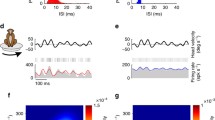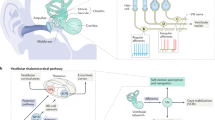Abstract.
Most naturally occurring displacements of the head in space, due to either an external perturbation of the body or a self-generated, volitional head movement, apply both linear and angular forces to the head. The vestibular system detects linear and angular accelerations of the head separately, but the succeeding control of gaze and posture often relies upon the combined processing of linear and angular motion information. Thus, the output of a secondary neuron may reflect the linear, the angular, or both components of the head motion. Although the vestibular system is typically studied in terms of separate responses to linear and angular acceleration of the head, many secondary and higher-order neurons in the vestibular system do, in fact, receive information from both sets of motion sensors. The present paper develops methods to analyze responses of neurons that receive both types of information, and focuses on responses to sinusoidal motions composed of a linear and an angular component. We show that each neuron has a preferred motion, but a single neuron cannot code for a single motion. However, a pair of neurons can code for a motion by the relative phases of firing-rate modulation. In this way, information about motion is enhanced by neurons combining information about linear and angular motion.
Similar content being viewed by others
Author information
Authors and Affiliations
Additional information
Received: 5 November 1998 / Accepted in revised form: 19 March 1999
Rights and permissions
About this article
Cite this article
Holly, J., McCollum, G. & Boyle, R. Identification of head motions by central vestibular neurons receiving linear and angular input. Biol Cybern 81, 177–188 (1999). https://doi.org/10.1007/s004220050554
Issue Date:
DOI: https://doi.org/10.1007/s004220050554




